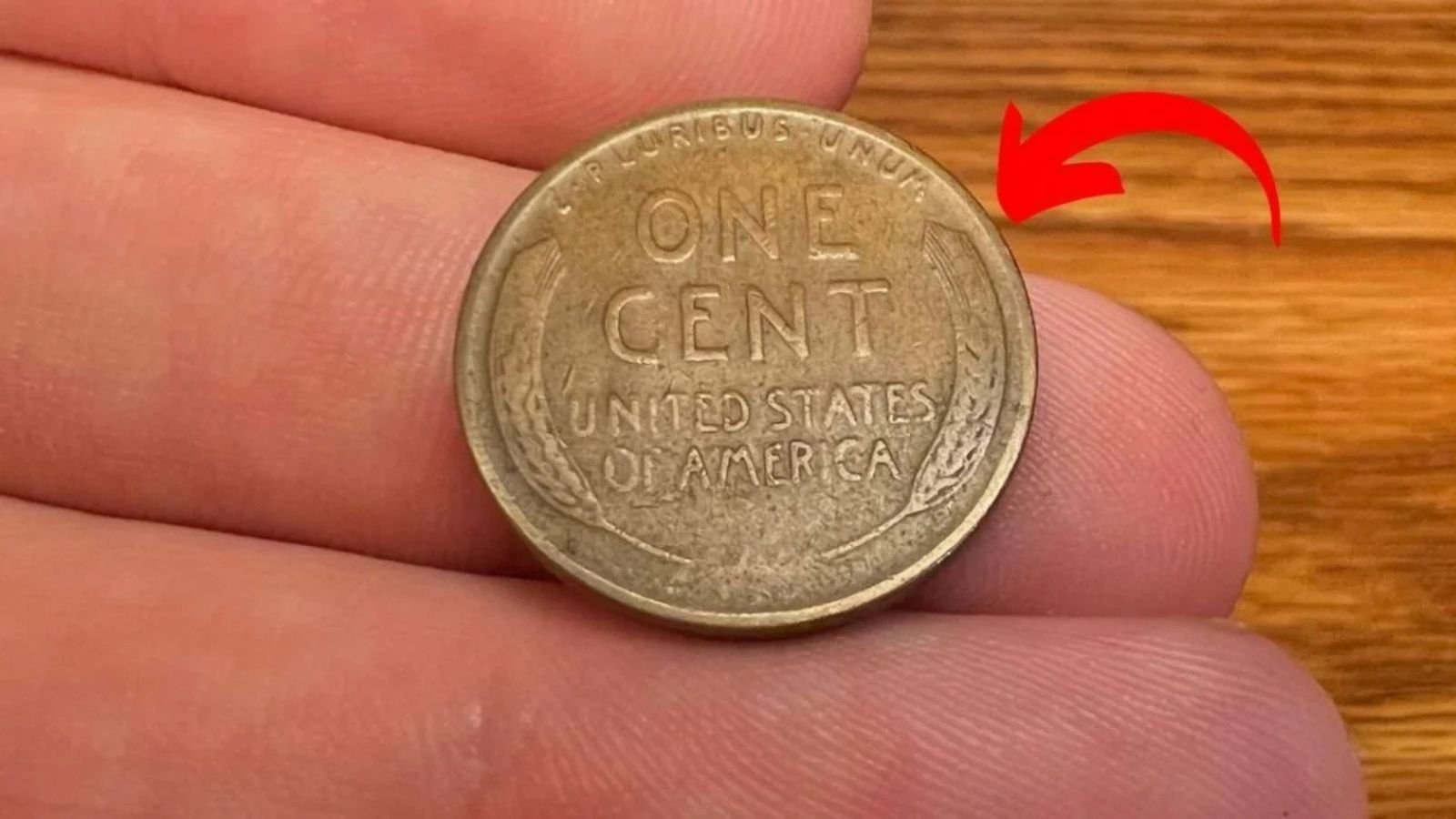When most people come across a penny, it’s usually met with little thought. Some might even walk past one lying on the ground, considering it too small to bother with. But what if that tiny coin was actually worth hundreds of thousands of dollars? The truth is, not all pennies are equal in value. In fact, one particular version of the Lincoln Wheat Penny could potentially be worth as much as $880,000—and believe it or not, it might still be circulating among everyday change.
A Glimpse into History: The Story Behind the Lincoln Wheat Penny
The Lincoln Wheat Penny holds a significant place in American numismatic history. First minted in 1909, this iconic coin was released to commemorate the 100th anniversary of President Abraham Lincoln’s birth. It was a groundbreaking design at the time, being the first U.S. coin to feature a real historical figure, replacing the previously used allegorical representations of liberty.
On the obverse, or front, of the coin, is the profile of Abraham Lincoln. The reverse side features two wheat stalks bordering the words “ONE CENT” and “UNITED STATES OF AMERICA,” giving the coin its nickname—the Wheat Penny.
These pennies were in production until 1958, after which the reverse design was changed to feature the Lincoln Memorial. During its nearly five decades of production, various rare and valuable variations of the Lincoln Wheat Penny were minted due to limited runs, design errors, and unusual materials.
Why Some Lincoln Wheat Pennies Are Worth a Fortune
While millions of Lincoln Wheat Pennies were minted over the years, certain versions are extraordinarily rare. Among the most valuable is the 1943 Lincoln Wheat Penny made from copper instead of the standard steel used that year.
In 1943, due to the need for copper for World War II efforts, the U.S. Mint switched the composition of pennies from copper to zinc-coated steel. However, a few copper blanks were mistakenly used, resulting in a limited number of 1943 Lincoln Wheat Pennies made from copper. These rare coins are now highly sought after by collectors.
Because of their rarity and historical significance, a pristine 1943 copper Lincoln Wheat Penny can fetch hundreds of thousands of dollars at auction. In some cases, private collectors have been known to pay up to $880,000 for a single coin in top condition.
Overview Table: The Lincoln Wheat Penny
| Feature | Description |
|---|---|
| Coin Name | Lincoln Wheat Penny |
| Year Introduced | 1909 |
| Most Valuable Year | 1943 (Copper Error) |
| Regular Material (1943) | Zinc-coated Steel |
| Rare Material (1943) | Copper |
| Estimated Value | Up to $880,000 |
| Circulating? | Possibly still in circulation |
| Distinctive Design | Wheat stalks on the reverse |
Still Out There? How a Rare Coin Could Be in Your Pocket
You might be thinking, “How could such a valuable coin still be in circulation?” It sounds unbelievable, but it’s possible. Most people aren’t trained to distinguish between a standard coin and a valuable one. A copper-colored penny dated 1943 could easily be mistaken for a regular coin by someone unfamiliar with its significance.
As a result, it could end up in a change jar, vending machine, or your wallet. Over the years, there have been numerous stories of people stumbling upon valuable coins in pocket change or inherited collections.
That’s what makes collecting coins—and knowing what to look for—so fascinating and potentially profitable.
How to Identify a Valuable Lincoln Wheat Penny
Want to check if you might have a hidden treasure? Here are the key things to look for:
- Check the Date: Start by checking the year. If it says 1943 and has a copper color rather than the standard steel-silver appearance, that’s your first clue.
- Use a Magnet: A simple trick to distinguish a steel penny from a copper one is to use a magnet. Steel pennies will stick; copper ones won’t.
- Look at the Condition: Coins in better condition fetch higher prices. Even if your coin is well-worn, it could still be worth a lot, but mint-condition examples can command top dollar.
- Examine the Edges: Authentic Lincoln Wheat Pennies have smooth or reeded edges. Any inconsistency may indicate a counterfeit or error coin.
- Consult a Coin Expert: If you believe you have a valuable Lincoln Wheat Penny, take it to a professional coin appraiser or a reputable numismatics dealer.
- Don’t Clean the Coin: Never clean an old coin. Cleaning can significantly reduce its value.
The 1943 Copper Error: Why It Matters
So, why is the 1943 copper Lincoln Wheat Penny so special? The answer lies in its accidental nature and the context of the time. In 1943, America was in the thick of World War II, and copper was considered a critical material for ammunition and military equipment. Therefore, the U.S. Mint decided to conserve copper by using steel to produce pennies.
But not all copper blanks were removed from the coin production process. Some copper planchets (coin blanks) were left in the hoppers and ended up being used to mint a small number of 1943 pennies. These few coins were indistinguishable in design from their steel counterparts, but their material made all the difference.
To date, only a few dozen 1943 copper Lincoln Wheat Pennies have been authenticated, and each is a numismatic marvel.
Other Rare Lincoln Wheat Pennies
While the 1943 copper version is the most famous, other Lincoln Wheat Pennies are also considered rare and valuable. These include:
- 1909-S VDB: The first version of the penny with the designer’s initials, “VDB,” minted in San Francisco. Only about 484,000 were made.
- 1922 No D: A penny minted in Denver with a missing “D” mint mark, likely due to a worn die.
- 1944 Steel Penny: The reverse of the 1943 error—some 1944 pennies were accidentally struck in steel instead of copper.
These coins can also command thousands of dollars depending on their condition and rarity.
Where to Look for Rare Pennies
Finding a valuable Lincoln Wheat Penny isn’t always a matter of luck. Here are some common places where people have found rare coins:
- Old Coin Jars or Piggy Banks
- Estate Sales or Inherited Collections
- Garage Sales or Flea Markets
- Pocket Change
- Bank Coin Rolls
It’s worth taking the time to sort through coins when you encounter them. You never know when you might uncover a hidden gem.
Selling and Grading Valuable Coins
If you believe you’ve found a valuable Lincoln Wheat Penny, the next steps are crucial:
- Get It Graded: Professional grading services like PCGS or NGC will authenticate and grade your coin. This adds to its credibility and market value.
- Do Your Research: Check auction sites, forums, and recent sales to gauge your coin’s potential worth.
- Choose Where to Sell: Options include auction houses, online platforms like eBay, or coin dealers. Auctions often yield the highest price for rare coins.
- Keep It Safe: Store it in a protective holder or case until you decide to sell.
Final Thoughts: Don’t Underestimate the Penny
It might be the smallest denomination in U.S. currency, but the Lincoln Wheat Penny has proven that value isn’t always about face value. With historical significance, rare variations, and potential windfalls reaching hundreds of thousands of dollars, this humble coin holds a legacy unlike any other.
So, next time you receive a penny in your change or come across an old coin jar, take a closer look. You just might be holding a treasure that’s been hiding in plain sight.
In the fascinating world of coin collecting, knowledge is power. And in the case of the Lincoln Wheat Penny, it might also be your ticket to a small fortune.
Some Important Link
| Telegram Group | Click Here |
| WhatsApp Group | Click Here |
| Home Page | Click Here |











